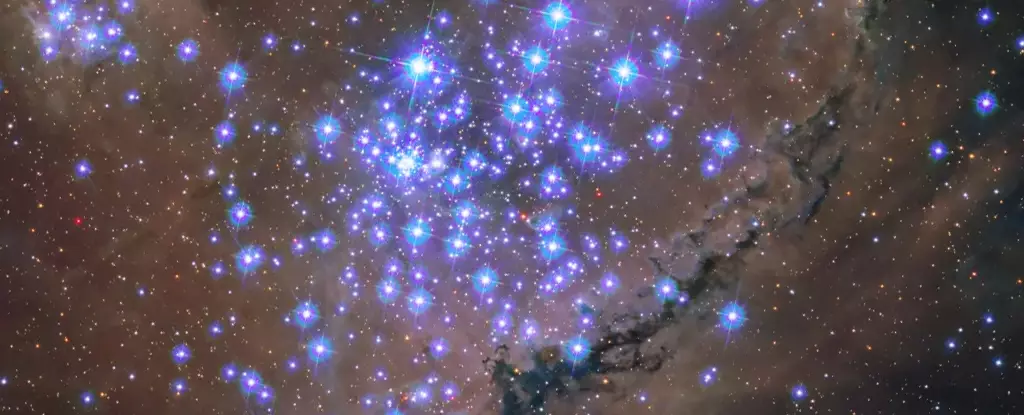Located just outside of the Milky Way Galaxy, approximately 210,000 light-years away from Earth, lies the Small Magellanic Cloud (SMC). This dwarf galaxy spans about 18,900 light-years in diameter and is home to an estimated 3 billion stars. The SMC, along with its companion, the Large Magellanic Cloud (LMC), orbits around the Milky Way as satellite galaxies. Scientists find these satellite galaxies particularly fascinating due to the insights they provide into star formation and the evolutionary process of galaxies through mergers.
One of the remarkable features of the SMC is the stunning star cluster known as NGC 346, situated near the center of the brightest star-forming area in the galaxy, the hydrogen-rich nebula N66. The intricate interplay between the cluster’s dozens of hot, young, blue stars and the surrounding dust and gas makes NGC 346 one of the most dynamic and detailed star-forming clusters ever observed.
Recently, NASA unveiled a new image of NGC 346 captured by the iconic Hubble Space Telescope. This image offers a unique and mesmerizing perspective of the star cluster, made possible by Hubble’s exceptional resolution and its ability to conduct sensitive ultraviolet observations. Unlike previous observations utilizing visible and infrared light, this latest image combines ultraviolet and some visible light data obtained from Hubble’s Advanced Camera for Surveys (ACS) and Wide Field Camera 3 (WFC3).
The primary objective of studying NGC 346 and similar regions in the SMC is to gain insights into star formation processes and their impact on the interstellar medium (ISM) in galaxies with low metallicity. These conditions in the SMC are believed to mimic the early Universe when heavy elements were scarce, and the first stars and galaxies (Population III) began to appear around 100 million to one billion years after the Big Bang. The distribution of heavier elements throughout space occurred as these early stars ended their lifecycle in supernova explosions.
After more than three decades in orbit, the Hubble Space Telescope continues to play a crucial role in advancing our understanding of the Universe’s origins and evolution. By capturing breathtaking images like NGC 346 in the Small Magellanic Cloud, Hubble reinforces its position as an indispensable tool for scientific discovery and exploration.


Leave a Reply